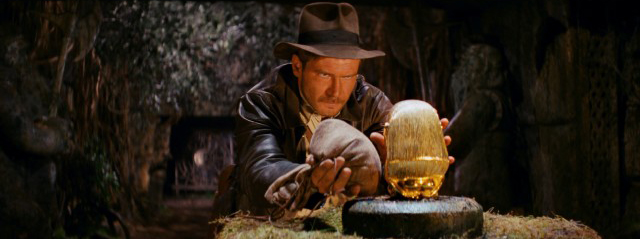In my Olympus gaming group, my Saturday online game, in a recent fill-in session, we were playing a Mad Max-style post-apocalypse one-shot. Our fearless protagonists found themselves in the upper levels of a toppled skyscraper, both the walls and floors slanted such that a misstep would send unfortunate soul sliding toward the outer windows, and a long fall to their inevitable doom. Lacking the necessary skills and equipment to safely navigate this hazard, most of the PCs succumbed to the inevitable failure on the Climb checks to advance in a controlled manner, and slid down the canted floor toward the outer wall, breaking through the weakened window glass; one PC ended up hanging onto another’s leg, dangling out of the window, many stories above the river below. It was very dramatic, as you might expect, worthy of typical action movies.
That failure was frustrating, as it generally is. But I realized some time after the fact that the scene we were playing out would have been horribly boring without it—we would have walked in, got what we came for, and left. Failure made the scene entertaining.
Later I recalled another such incident: another one-shot with the Olympus group, this time an Infinite Worlds game. The PCs were in an American “Old West” timeline, and were to be “taken in” by the local constabulary, and we resisted. My character, a (decent) practitioner of Kali, was attempting to take down a rifle-wielding cavalryman, and over the course of 5-6 rounds of back and forth—attack, defend, attack, defend…actually, I don’t remember how it ended, except that it was really frustrating that I was having so much trouble connecting with this yokel. Afterward, I complained a little, but everyone else at the virtual table exclaimed at how cool it was, all the back and forth, like a martial arts movie. Again, that failure turned out to be entertaining—for everyone else, at least. I’ve endeavored to remember that incident since then any time I find my character unable to get past his opponents’ defenses.
To reference the image above: imagine the beginning segment of Raiders of the Lost Ark if Indy had succeeded in his attempt to spoof the trapped idol with the sandbag, and walked out—his failure made the scene memorable.
So what does it all mean, then?
I suppose the moral to this story is to treat failures as an opportunity to entertain. As GM, give a little leeway to the entertainment potential of failures. For example: there’s an option spoken of in GURPS Horror for Fright Check failures (“Not Just Stunned,” Horror p. 141), that allows sufferers of all those “Stunned for X Rounds” results to run around in circles, crawl randomly, scream or cry—things other than stand there and get hit, so long as it’s “useless.” Make it funny. Make it dramatic. Make it cinematic. Embrace failure as a necessary part of the storytelling.
But…
This does present a bit of a problem when you consider Impulse Buys, Plot Points, or other mechanisms for subverting failure. If you can cancel out failures, it (obviously) eliminates any sort of entertainment value one might derive from them. For this reason, I’m considering whether or not to allow regular Impulse Buys for my upcoming Inception campaign, or if I should disallow the buying-off of failures. I don’t have an answer for this yet, but I’ll be thinking about it—we’ll see what I decide.

